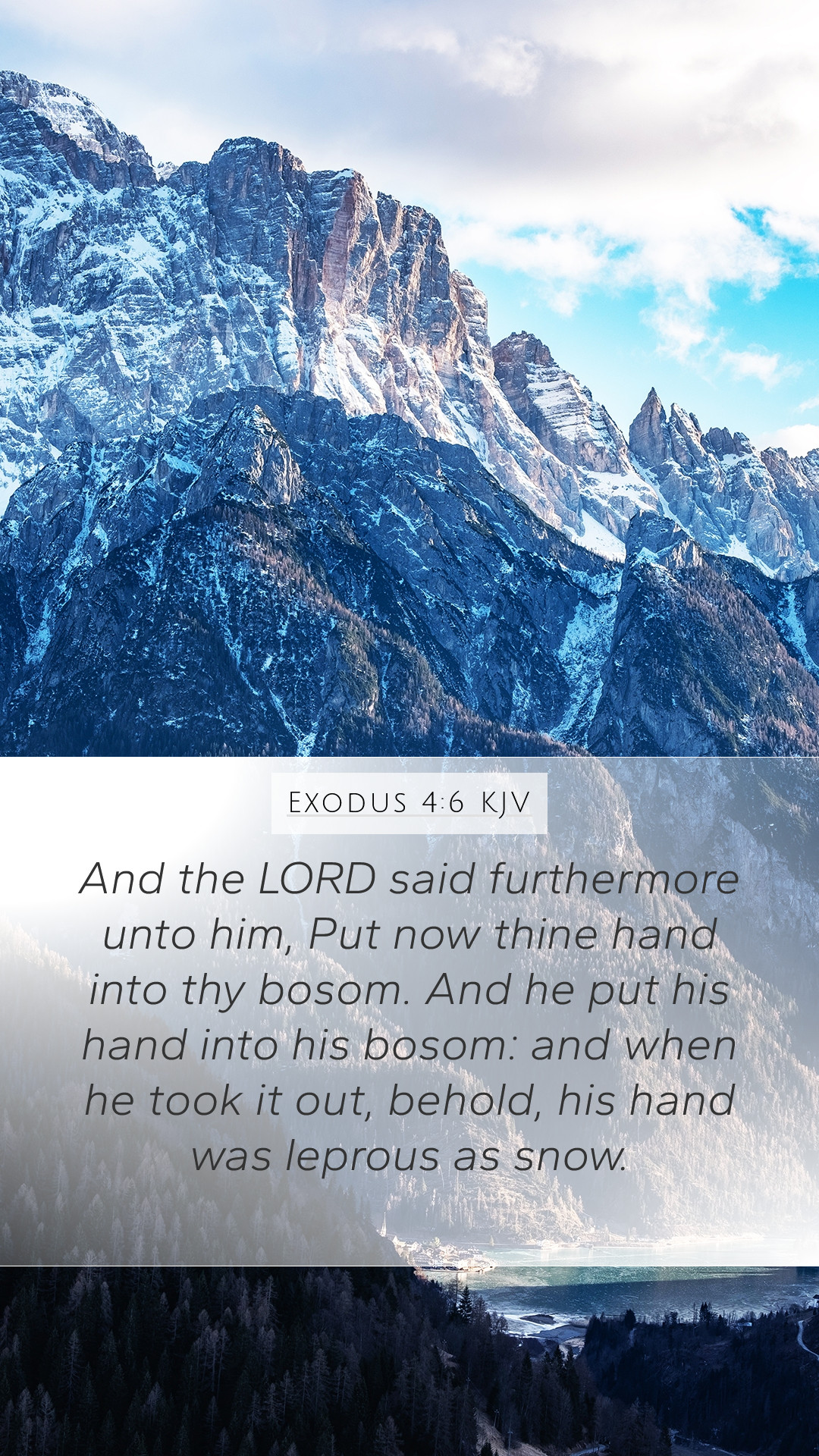Understanding Exodus 4:6
Exodus 4:6 states:
"And the LORD said furthermore unto him, Put now thine hand into thy bosom. And he put his hand into his bosom: and when he took it out, behold, his hand was leprous as snow." (KJV)
This verse occurs within the context of God preparing Moses for his mission to deliver the Israelites from Egyptian bondage. The Lord demonstrates His power through symbolic acts, revealing both Moses' vulnerability and God's sovereign ability to transform and heal.
Insights from Public Domain Commentaries
Matthew Henry's Commentary:
- Henry emphasizes the significance of God asking Moses to place his hand into his bosom as a lesson on introspection. It serves as a reminder of our human frailty and the need for divine intervention.
- He notes the dramatic transformation of Moses' hand into leprous flesh symbolizes sin and the effects of disobedience, while God's subsequent healing symbolizes redemption and restoration.
Albert Barnes' Notes:
- Barnes highlights the miraculous nature of this event as evidence of God’s power and authority. The leprosy is used as a sign to instill fear and respect for God’s might.
- He also mentions the instructional purpose of this act, to demonstrate that Moses, despite being chosen, is still susceptible to flaws - underscoring the necessity of reliance on God.
Adam Clarke's Commentary:
- Clarke elaborates on the symbolism of Moses’ hand, noting that the act of it becoming leprous reflects the state of the Israelites under oppression, with sin being a pervasive condition needing God's mercy to heal.
- He also interprets this transformation as a means by which God conveys the gravity of the mission ahead, signalling the serious nature of the deliverance that would follow.
Biblical Exegesis and Analysis
In examining Exodus 4:6, several key themes emerge:
- Divine Power: The miraculous transformation emphasizes that God holds ultimate power over life, health, and even human defects.
- Human Vulnerability: Moses’ leprous hand represents human imperfections and the inherent flaws in our nature.
- Need for Faith: The events preceding and following this verse compel us to trust in God’s plan, irrespective of our limitations.
Application of Exodus 4:6 in Daily Life
When studying this verse, one might ask: How can I apply its lessons in my life?
- Recognize your own weaknesses and understand that acknowledging them can be the first step towards spiritual growth.
- See God’s intervention in your life as a reminder that, through faith, you can overcome any challenges that seem insurmountable.
- Embrace the transformative power of faith as a means to heal not just physical ailments but also spiritual and emotional wounds.
Related Scripture References
- Exodus 4:7: Demonstrates God’s power to restore Moses’ hand.
- Isaiah 53:5: Refers to healing and redemption through suffering.
- Matthew 10:1: Jesus giving authority to His disciples, displaying continuity of miraculous signs in ministry.
- James 5:16: The significance of prayer and the healing that follows faithfulness.
This overview of Exodus 4:6 serves to enhance your Bible verse understanding, interpreted through the lenses of esteemed commentators. Studying this verse in context can deepen your understanding as part of a larger spiritual journey or Bible study group.


